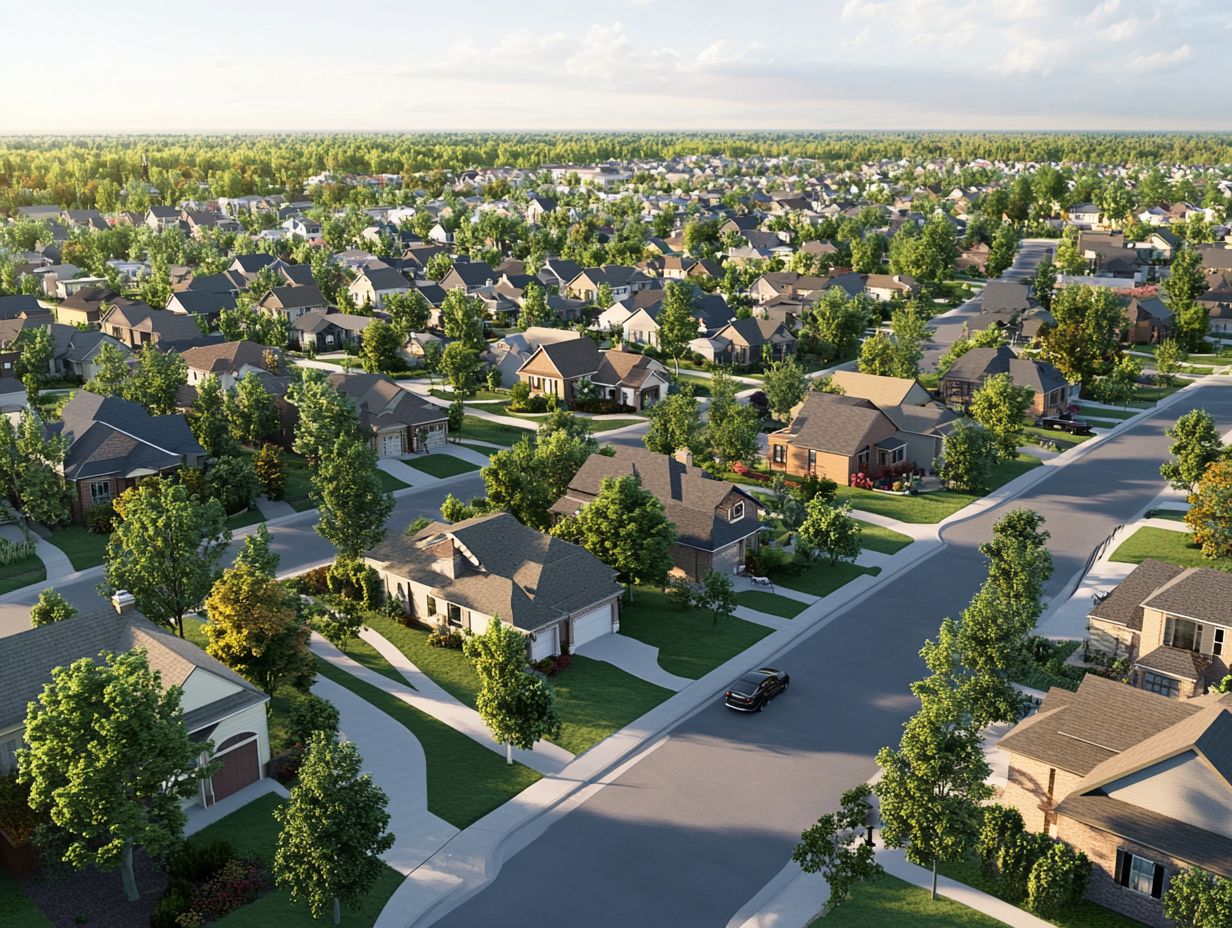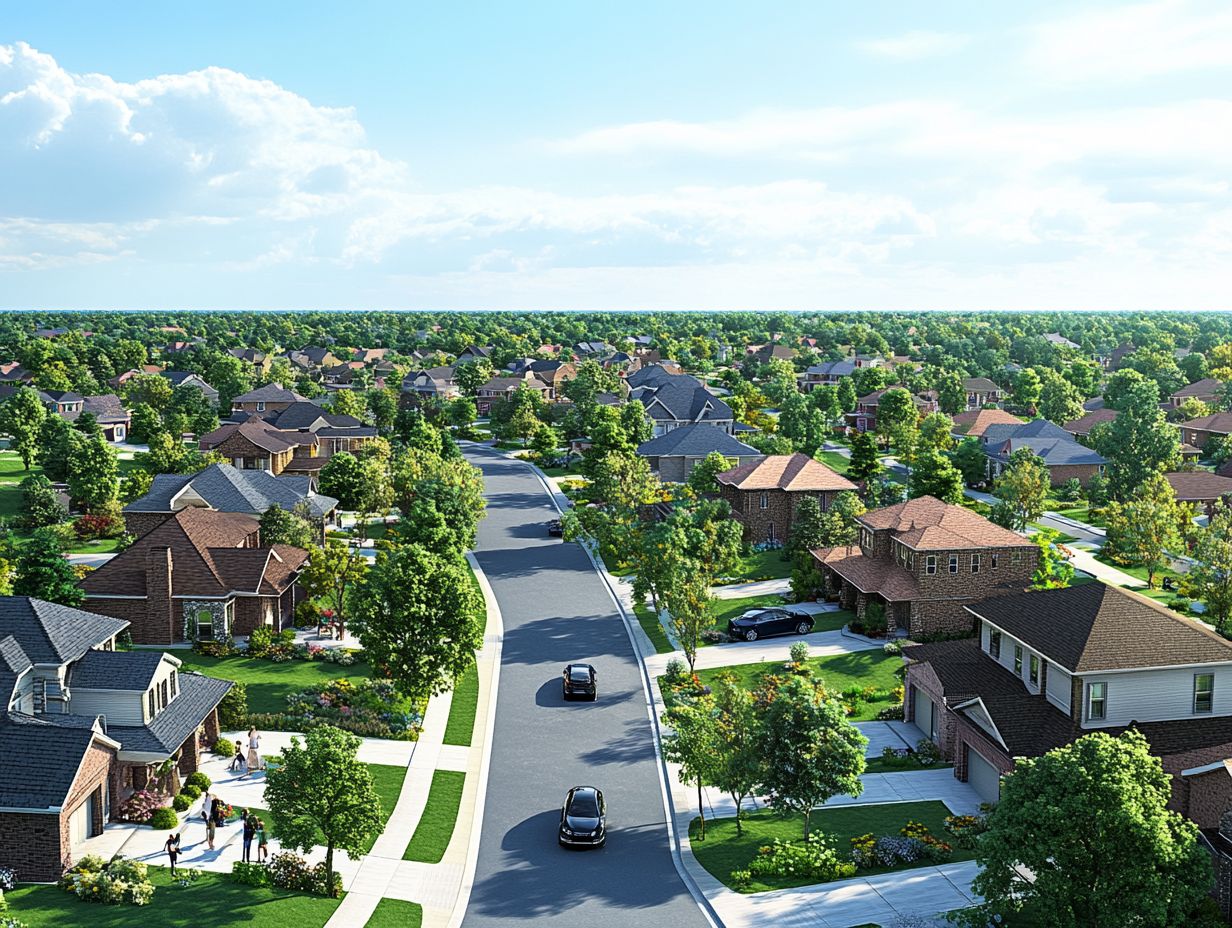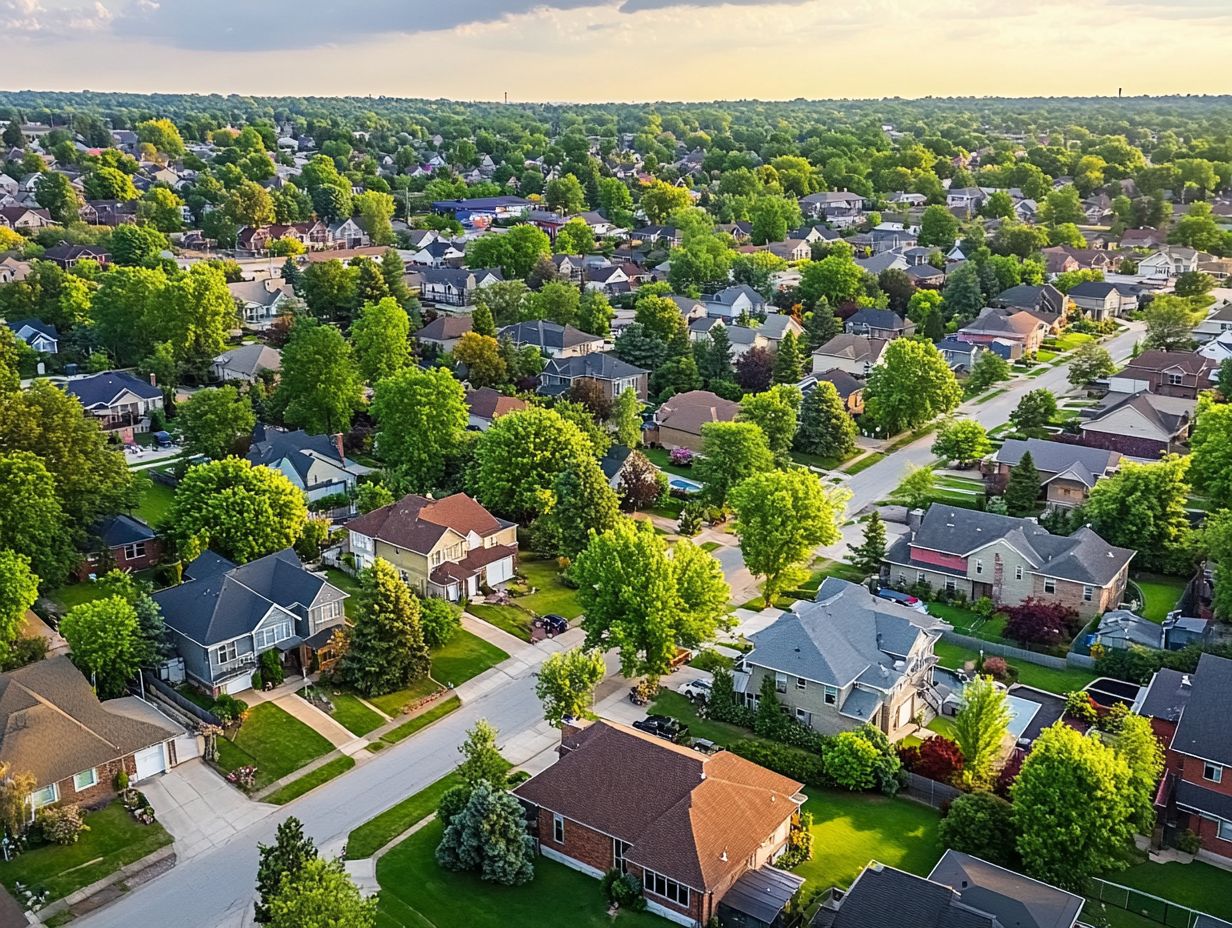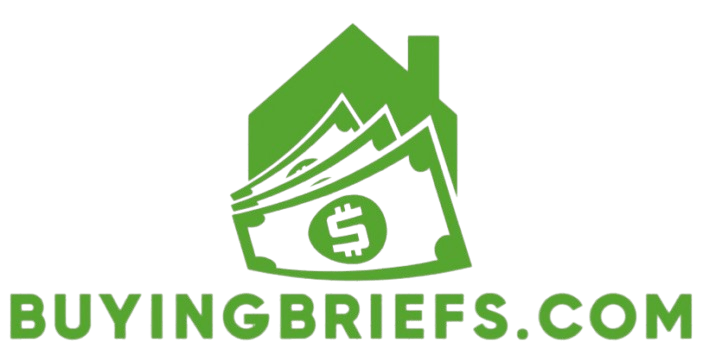5 Neighborhood Features to Evaluate as a Buyer
Choosing the right neighborhood is just as vital as discovering your dream home.
Whether you re a first-time buyer or contemplating a move, several key factors can greatly influence your decision. From crime rates and school quality to the accessibility of essential services and public transportation, each aspect significantly shapes your living experience.
Grasping property values and market trends equips you to make a wise investment.
Here are five must-check features that can transform your neighborhood experience!
Contents
- Key Takeaways:
- 1. Crime Rates
- 2. Quality of Schools
- 3. Proximity to Essential Services
- 4. Walkability and Public Transportation
- 5. Property Values and Market Trends
- What Are the Key Factors to Consider When Evaluating a Neighborhood?
- How Can One Research Crime Rates in a Neighborhood?
- What Are the Indicators of a Quality School?
- What Essential Services Should Be Considered?
- How Can One Determine the Walkability and Public Transportation Options in a Neighborhood?
- What Are the Factors That Affect Property Values and Market Trends in a Neighborhood?
- Frequently Asked Questions
- What are the five most important neighborhood features to evaluate as a buyer?
- How can I check the safety of a potential neighborhood?
- What should I look for in schools when evaluating a neighborhood?
- Why is transportation important when buying a home?
- What important amenities should I look for in a neighborhood?
- How can I find property values in a neighborhood?
Key Takeaways:

- Crime rates ensure safety.
- Quality schools are essential for children s education.
- Essential services contribute to convenience.
1. Crime Rates
Understanding crime rates is crucial for ensuring neighborhood safety and cultivating a sense of security for your family. High crime rates can significantly impact property values, so it s essential to research this aspect before making a commitment.
Safety extends beyond statistics; it also involves community involvement and local events that contribute to the neighborhood’s character.
Check your local police department or online platforms for crime statistics. Engaging with the community by attending neighborhood meetings and connecting with residents can also reveal a commitment to safety.
A strong sense of community can deter crime, enhance your quality of life, and positively influence property values, making it easier for you to sell or rent your home in the future.
2. Quality of Schools
The quality of schools in a neighborhood is crucial for homebuyers, especially those with families. It directly influences your children’s education and development.
Evaluating school district performance and the availability of essential educational resources can significantly impact property values and the neighborhood’s overall appeal.
Examine metrics such as standardized test scores, school performance ratings, and community feedback to gauge local schools’ effectiveness.
School district boundaries play a vital role in real estate decisions, determining both education quality and potential resale value. By understanding these factors, you can ensure your children receive the best education while securing a sound investment.
3. Proximity to Essential Services
Proximity to essential services like grocery stores, coffee shops, and parks enhances a neighborhood’s appeal for homebuyers. This factor boosts walkability and convenience, making daily life smoother.
Access to nearby essentials often dictates your chosen location’s desirability, contributing to a vibrant community. Being able to stroll to your favorite caf fosters a sense of belonging.
Walkable neighborhoods promote a healthier lifestyle and cultivate unique character where local businesses thrive. These areas attract homebuyers seeking a lifestyle that emphasizes convenience and authenticity.
Ultimately, this blend of accessibility and charm elevates a basic living environment into an exceptional place to call home.
Don t wait! Evaluate these features to ensure you choose the right neighborhood today!
4. Walkability and Public Transportation

Walkability and good public transportation are crucial elements that significantly influence the housing market and the appeal of a neighborhood, especially in urban settings.
As a homebuyer, easy access to amenities is important, with walkable neighborhoods often experiencing increased demand and quicker housing turnover.
The availability of commuting options also plays a vital role in determining property values. Therefore, these factors are essential for you to consider when searching for a new home.
To accurately assess walkability scores, you can take advantage of various online tools designed to evaluate proximity to essential services like grocery stores, parks, and schools.
Examining public transportation options, including bus routes and train stations, will give you valuable insights into convenience and accessibility.
These aspects not only influence your daily commute times but also contribute to a more enriching lifestyle. Many residents seek neighborhoods that offer walkable leisure activities.
Together, these elements enhance a neighborhood’s charm, attracting buyers who prioritize a vibrant and connected living experience.
5. Property Values and Market Trends
Understanding property values and market trends is essential for you as a homebuyer. These elements dictate the investment opportunities available within your desired neighborhood.
Factors such as housing supply, appraised value, and local demand all play a role in influencing real estate value. It is imperative to stay informed about the dynamics of the housing market before you make a purchase.
Utilizing resources like Redfin and Trulia can significantly enhance your analysis by providing access to up-to-date listings, historical pricing data, and insightful neighborhood details.
It s also wise to delve into local economic conditions, including job growth, income levels, and school quality. These factors can profoundly impact property values and your potential resale opportunities.
By keeping an eye on trends in similar properties in the area, you can gather valuable insights about pricing fluctuations. Reading market reports gives you context about current events affecting the housing sector.
By synthesizing these resources, you can make informed decisions that align perfectly with your financial goals.
What Are the Key Factors to Consider When Evaluating a Neighborhood?
When evaluating a neighborhood, consider key factors like its features, safety, community engagement, and proximity to essential amenities. For more insights, check out how to choose the right neighborhood as a new buyer. These elements enhance the neighborhood’s appeal and significantly influence property values and your long-term satisfaction.
By prioritizing safety, you can create a secure environment for your loved ones, ensuring peace of mind.
The quality of schools is also vital for families; access to reputable educational institutions enhances your children s learning experiences and boosts the neighborhood s desirability.
Access to essential services like healthcare facilities, shopping centers, and recreational activities can greatly enrich your daily life, promoting convenience and elevating your overall quality of living.
Community involvement helps you build meaningful relationships, allowing you to engage in local initiatives and fostering a strong sense of belonging that resonates throughout the neighborhood.
How Can One Research Crime Rates in a Neighborhood?
Researching crime rates in a neighborhood requires a thoughtful approach. Utilize various resources to ensure your public safety and accurately assess safety factors.
You can explore online crime databases (resources that compile and report crime statistics), local police reports, and community forums to gather valuable insights that will guide your property decisions.
Websites like NeighborhoodScout and the FBI’s Uniform Crime Reporting program offer detailed statistics and trends. Local news sources frequently cover recent incidents, providing real-time context that helps you gauge the safety climate.
It’s essential to recognize that while numbers can signal high or low crime rates, they don t paint the entire picture. Factors such as socio-economic conditions, community engagement, and law enforcement practices all play vital roles in shaping a neighborhood’s safety.
Therefore, interpreting these statistics requires a careful examination of the broader context to form a well-rounded understanding.
What Are the Indicators of a Quality School?

When looking for a quality school, consider indicators like academic performance, extracurricular activities, and community involvement. These factors shape the overall educational experience.
If you care about the school’s reputation, check school performance metrics such as standardized test scores and graduation rates. This info is crucial for making smart homebuying decisions!
To explore school performance data, turn to reputable resources like the National Library of Medicine for educational statistics or USDA.gov for relevant reports.
Visiting schools and connecting with community members provides invaluable insights that numbers can’t convey. Engaging in these interactions helps assess school culture and its influence on student development, ensuring you make choices that resonate with your family’s educational values.
What Essential Services Should Be Considered?
When evaluating a neighborhood, consider the availability of services like grocery stores, public transportation, and other nearby essentials. For more insights, check out how to evaluate a neighborhood. Proximity to these amenities boosts convenience and enhances the area’s overall charm, making it a sought-after spot for homebuyers.
Access to healthcare facilities, such as hospitals and clinics, is vital in assessing an area’s suitability. Shopping centers do more than provide essential goods; they serve as social hubs, fostering community interaction.
Recreational spaces, like parks and sports complexes, promote a healthy lifestyle and offer leisure activities. Together, these services shape the community’s dynamics, influencing your search for a location that aligns with your lifestyle needs.
How Can One Determine the Walkability and Public Transportation Options in a Neighborhood?
Determining the walkability and public transportation options in a neighborhood requires assessing various factors, such as public transit routes and pedestrian-friendly pathways.
Use online tools and community resources to look into these aspects, significantly impacting your living experience and satisfaction in a new location.
By exploring walkability score websites, you can discover how easily you can navigate your surroundings without a vehicle, often leading to healthier lifestyle choices. This ease of access streamlines errands and leisure activities.
Public transit maps reveal neighborhood connectivity, allowing you to evaluate how efficiently you can reach desired destinations. Living in walkable areas tends to boost property values, as many are drawn to neighborhoods offering accessibility and vibrant community life.
What Are the Factors That Affect Property Values and Market Trends in a Neighborhood?
Various factors influence property values and market trends, including housing supply, local economic conditions, and community features that enhance appeal. To identify investment opportunities and gauge future resale value, stay informed about these dynamics.
Local government policies shape these values through zoning laws, property taxes, and urban development initiatives that can foster growth or present obstacles.
As neighborhoods evolve, the interaction between demand from new commercial projects and housing availability can significantly impact pricing.
To stay ahead in this changing market, leverage real estate websites for current listings and historical data. Also, watch local news sources for updates on city plans and community changes that may affect property desirability.
Frequently Asked Questions

What are the five most important neighborhood features to evaluate as a buyer?
The five key features are safety, schools, transportation, amenities, and property values.
How can I check the safety of a potential neighborhood?
Research online for crime rates. Talk to local residents and visit at different times to get a real feel for the area.
What should I look for in schools when evaluating a neighborhood?
Consider the quality of schools and the types available, such as public or private. Proximity to schools is also important for families.
Why is transportation important when buying a home?
Transportation affects your daily commute and access to public transport. It can also impact the potential resale value of the home.
What important amenities should I look for in a neighborhood?
Look for grocery stores, restaurants, parks, and recreational facilities. Shopping centers are also great to have nearby.
How can I find property values in a neighborhood?
Research recent sales data and consult a real estate agent. Attend open houses to understand the market better.






